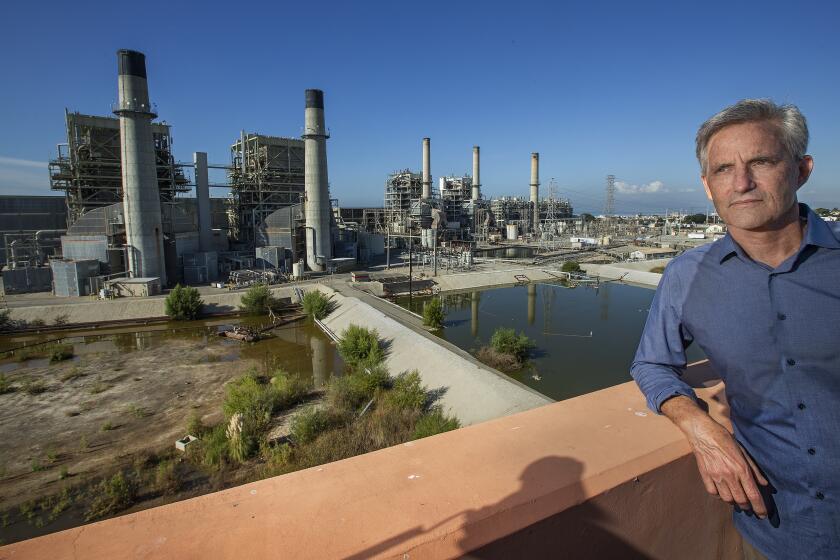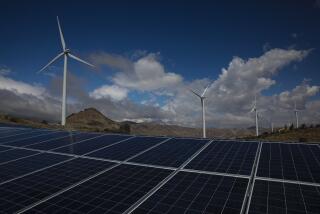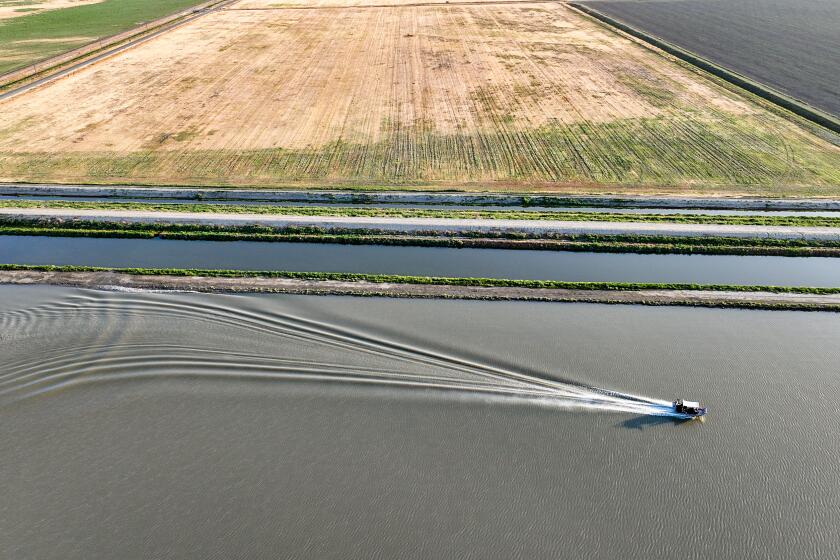California approves climate change target that critics say is far too weak
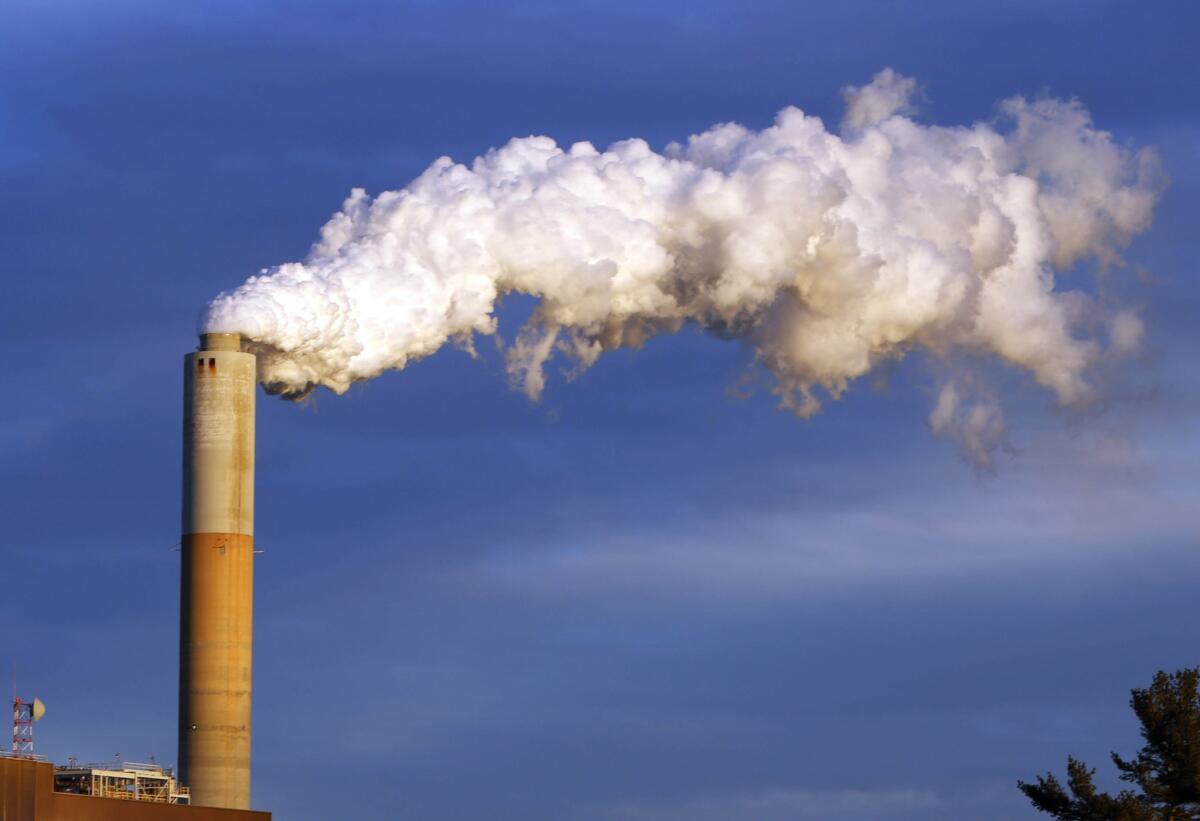
State officials signed off Thursday on a climate change target that critics say will reduce planet-warming emissions far too slowly. The action comes as economic disruption caused by the COVID-19 pandemic is expected to slow the growth of renewable energy.
Meeting via video conference to protect against the novel coronavirus, the five-member California Public Utilities Commission unanimously approved a plan that aims to cut power-plant emissions by about 25% over the next decade — a slower pace than those emissions fell during the previous decade. The commission had studied a plan to cut power-sector emissions in half but ultimately concluded the less aggressive target would keep California on track to meet its goal of 100% clean electricity by 2045.
Commissioner Liane Randolph described the agency’s decision as plenty ambitious. She said it would require California to roughly double its fleet of solar panels, wind turbines and lithium-ion batteries by 2030, dramatically reducing the use of fossil fuels.
“These historic levels of renewable procurement will be a significant challenge to achieve,” Randolph said.
Climate advocates were less impressed.
Environmental groups and renewable energy companies said the decision would put California at risk of failing to slash economy-wide climate change pollution 40% below 1990 levels by 2030, a goal enshrined in state law.
Power plants account for less than one-fifth of the state’s overall emissions. But cleaner electricity will be critical to driving down emissions from other sectors, as Californians replace their gasoline-fueled cars with electric vehicles and swap out natural gas furnaces for electric heat pumps.
Looking past 2030, the commission’s decision could make it difficult to achieve 100% clean electricity by 2045, critics said.
Deborah Behles, an attorney representing the California Environmental Justice Alliance, pointed to commission data showing that if the state reduces power-plant emissions by only one-fourth between now and 2030, utilities would need to add three times as much clean power capacity between 2030 and 2045 as they would during the coming decade — a massive backloading.
“There’s a huge concern that it won’t happen, that it’s just too aggressive to try to do in that short a time frame,” Behles said in an interview. “Let’s speed up this development to reduce air pollution, and reduce greenhouse gases as soon as possible.”
Your support helps us deliver the news that matters most. Subscribe to the Los Angeles Times.
In some ways, the debate comes down to a simple math problem.
California’s electricity sector was responsible for around 62 million metric tons of planet-warming carbon pollution in 2017, the most recent year for which statewide data are available. The Public Utilities Commission decided Thursday that those emissions should drop to 46 million metric tons by 2030. Clean energy advocates had pushed instead for a target of 30 million.
Southern California Edison, the state’s second-largest electric utility, endorsed a middle-ground target of 38 million metric tons. The research firm Energy Innovation also recommended the middle-ground target, as part of a report finding that California must cut emissions nearly twice as quickly during the 2020s as it did ruing the 2010s, and that current policies won’t get the job done.
Critics say the Public Utilities Commission is poised to keep emissions reductions chugging along at an unacceptably slow pace.
The California Independent System Operator, which oversees the power grid, endorsed calls for a more aggressive target, writing to the Public Utilities Commission that its proposal “will not provide a pathway to meet the state’s decarbonization goals.”
In the days leading up to the vote, a coalition of clean energy advocates wrote to Gov. Gavin Newsom urging him to intervene at the utilities commission. So did two organized labor groups, who signed a second letter to Newsom arguing that the commission’s proposal would “adversely affect the California economy and is a missed opportunity for thousands of good paying jobs.”
“At a time of increasing economic uncertainty, California should not be taking a step backward, and jeopardize progress in expanding clean energy jobs and economic development,” read the second letter.
Newsom’s office didn’t respond to a request for comment about whether the governor intervened at the commission.
But the commission did amend its proposal. While still endorsing the smallest emissions-reduction target under consideration, the commission asked utilities and other electricity providers to develop two sets of plans for how much clean energy they’ll need to buy over the next decade: one assuming a 46 million metric ton target, and another assuming 38 million metric tons.
“I hope that when the [utilities] do submit the two plans that the decision now requires, we will have the analysis to fully evaluate and consider the lower target of 38 million metric tons and adopt it at that point,” Commissioner Cliff Rechtschaffen said.
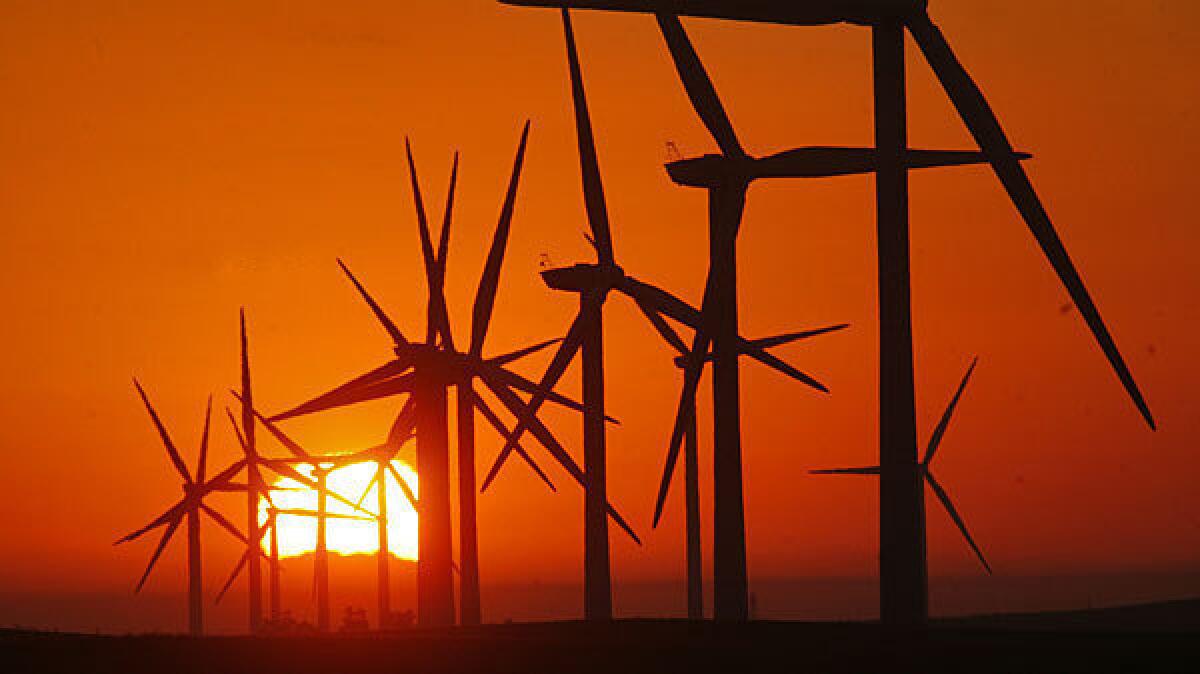
By the commission’s own estimation, the target of 38 million metric tons would cost ratepayers just $1.1 billion more per year by 2030 than the target of 46 million metric tons — a tiny fraction of the tens of billions of dollars Californians spend on electricity every year. Even aiming for 30 million metric tons would add only $2.4 billion in annual costs, compared with the least aggressive scenario.
Commissioner Martha Guzman Aceves voted for the plan adopted Thursday, but only after urging utilities and other electricity providers “to show leadership and take the opportunity to plan for 30 million metric tons, because I believe that is the only way we will realistically meet our 2045 goals.” She said faster action is needed to reduce California’s dependence on gas-fired power plants — a key concern for environmental groups, who worry the commission is not doing enough to phase out natural gas.
“This capacity that our gas generation currently provides is something we need to take on,” Guzman Aceves said.
With a 2020 shutdown deadline looming, four coastal gas plants have become an early battleground in an increasingly urgent debate.
Clean energy advocates said the changes to the commission’s decision were a step in the right direction, but still not enough.
“The commission must step up and lead by accelerating the deployment of new clean energy resources, energy storage projects, and power infrastructure upgrades,” Luis Amezcua, a senior campaigner with the Sierra Club, said in a written statement. “We must go beyond business as usual, and act with the urgency that is necessary to adequately tackle the climate crisis.”
Globally, the COVID-19 pandemic could at least temporarily slow efforts to transition to cleaner energy sources, at a time when scientists say society must move faster than ever to phase out fossil fuels and avoid the worst consequences of global warming.
The consulting firm Wood Mackenzie projected this week that global wind turbine installations would be 6% lower in 2020 than previously expected. Analysts at BloombergNEF warned earlier this month that global solar panel additions could fall in 2020 for the first time since at least the 1980s. Demand for lithium-ion batteries will decline too, BloombergNEF predicted.
The job losses could be severe. The Solar Energy Industries Assn. said this week that the U.S. solar industry, which employs an estimated 250,000 people, could be forced to shed half its workforce because of the coronavirus. The American Wind Energy Assn. made a similar prediction, saying the pandemic puts 35,000 U.S. jobs at risk, out of around 114,000 people working in wind power.
We asked eight experts if the global mobilization to slow the pandemic might pave the way for climate action.
V. John White, executive director of the Center for Energy Efficiency and Renewable Technologies, said the economic slowdown caused by the pandemic is all the more reason for California to promote as much clean energy construction as possible over the next few years by setting a more aggressive climate target, rather than back-loading construction in the years after 2030.
“We’ve got an economic stimulus opportunity here if we simply just get to work,” White said.

